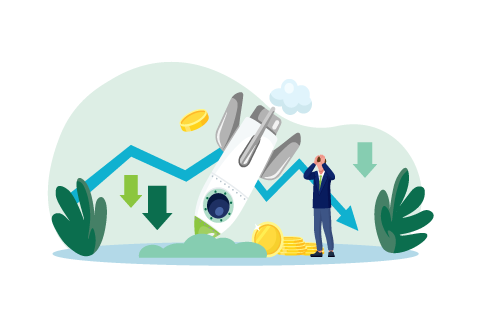It’s that time of the year again; the dusk is creeping in earlier, the leaves are changing palette, and we are feeling the first cold pinch of winter. Changing seasons aside, it is also when we as business leaders consider the year ahead in earnest – and start to see realistic forecasts for the economic landscape in 2024 and beyond.
Based on this week’s data from the IMF, which predicts a prolonged period of high interest rates and sluggish growth, it’s not a pretty picture.
While the outlook is clearly far from ideal, businesses should take some solace in the fact that we have, for the first time in a while, a view of the long term. For better or worse, it is the new economic norm, and businesses will have to adjust accordingly.
From ‘the new normal’ to the new business as usual
With the constant barrage of issues facing businesses over the last few years, it’s understandable that many have been operating in crisis mode, making short-term decisions and putting off longer term investments.
These challenges are compounded by constant global factors often directly outside business leaders’ and boards’ control – for example, the conflict escalation in the Middle East, with its significant human cost on all sides as well as impacting energy prices and causing further concerns for any drop in inflation.
With no return to ‘normal’ on the horizon, it’s even more critical that we focus on the fundamentals we can control. Businesses must adapt and move into a new version of ‘business as usual’.
This means placing greater emphasis on longer term thinking, resource development, clarity around your core value proposition, better planning, and investment. For leadership, it also means getting back to your purpose – why your organisation exists in the first place, what your customers value the most from you, and how (across all aspects of the business) you will deliver your mission and goals for the year ahead.
The long-term dividend
Our return on investment (ROI) research data, which we revisited last month in The Customer Service Dividend, shows that investing in customer service over the long term drives better financial performance. Over half a decade, companies who score above average for their sectors in our UK Customer Satisfaction Index (UKCSI) are seeing average growth at 7% a year above their competitors, which is a remarkable dividend.
In those last five years, we experienced a turbulent economic period including Brexit, Covid-19, and high inflation. And yet organisations who have invested in customer service are seeing the return. Some of the best performers include household names like Amazon, Timpson’s, and M&S.
So, while we may be in for a prolonged period of low growth, companies that start thinking longer term will find themselves with more loyal and engaged customers and teams – and better placed to deal with economic headwinds. Indeed, a real focus on the customer will help to return some growth to the economy.
The value of service is more important than ever, as a key differentiator and a driver of long-term organisational success. Despite the gloomy outlook, there is still hope for organisations that stop operating in survival mode and start working to get their service strategy right.



